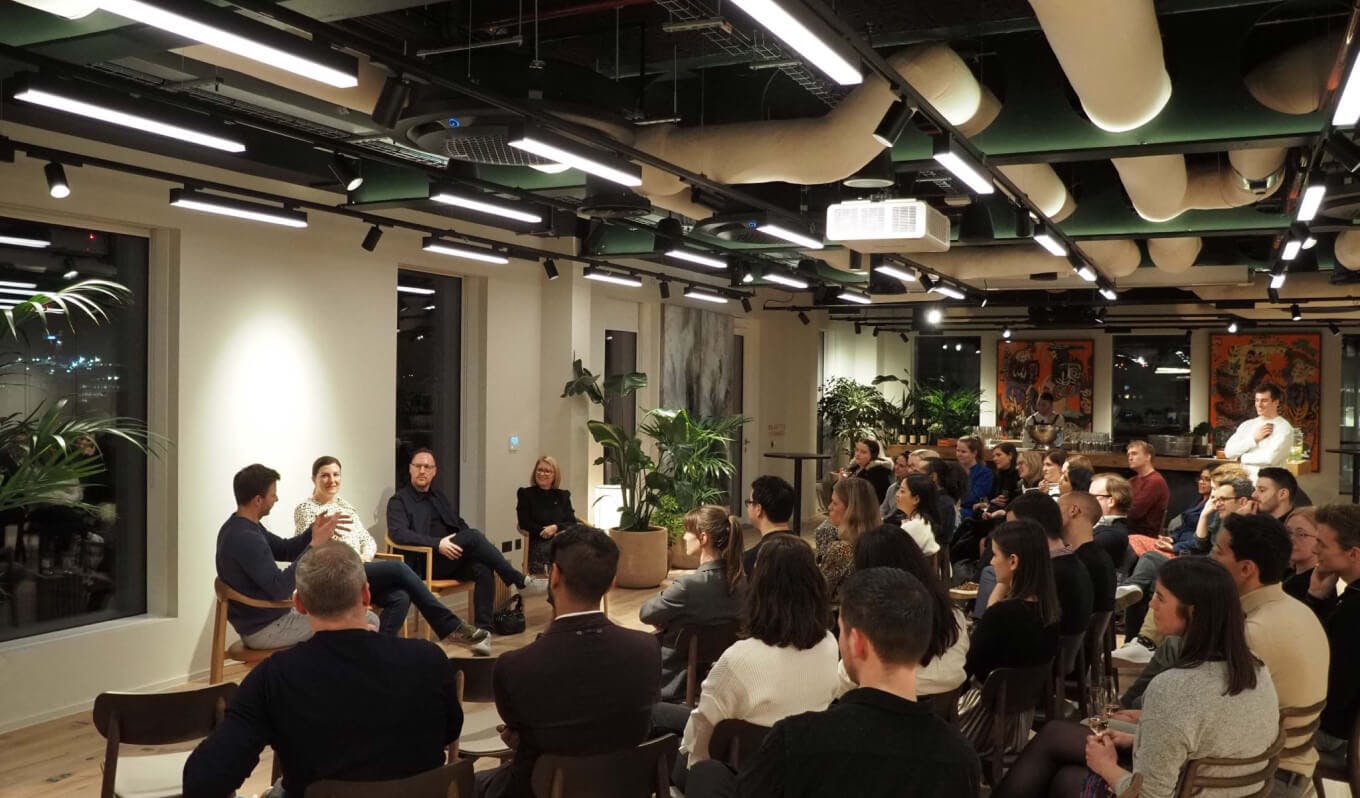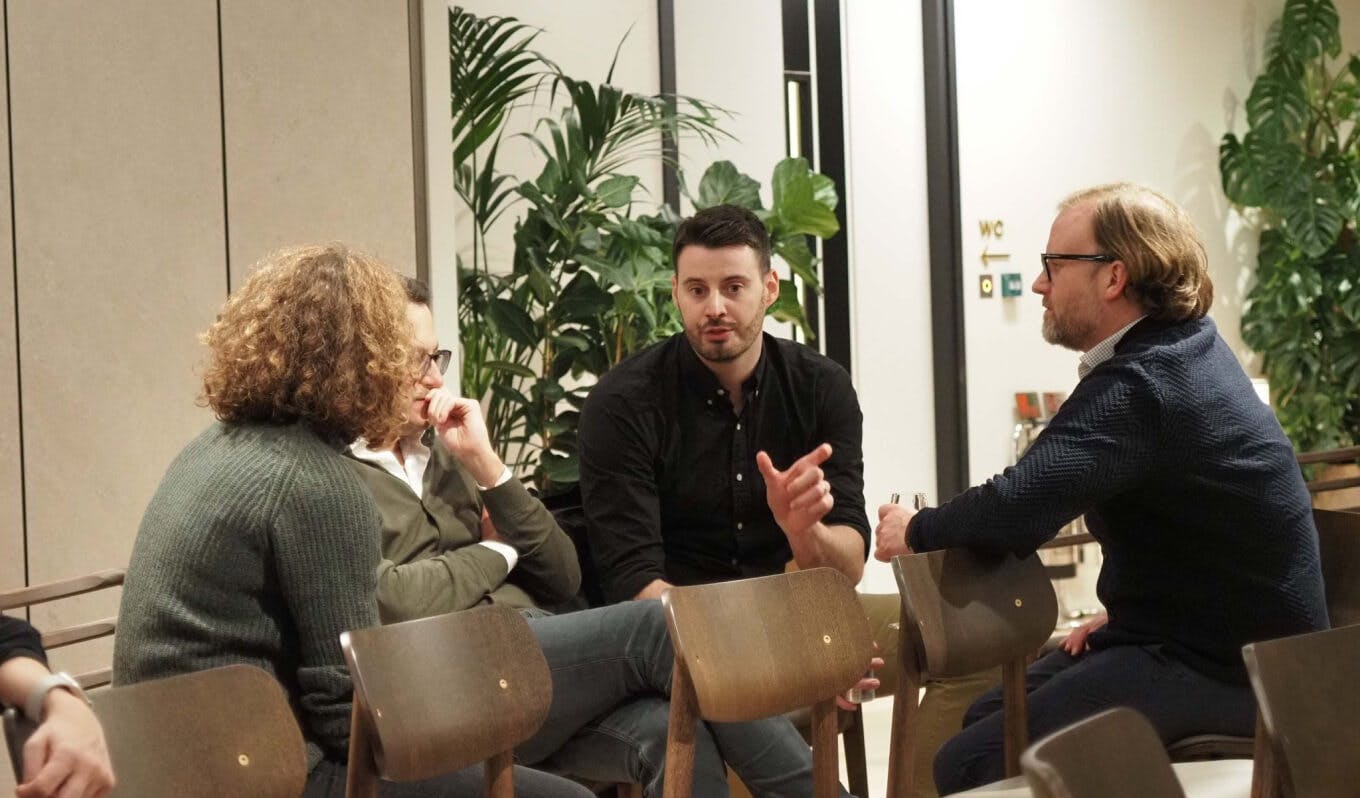How to build and retain great teams in 2024: event summary

The role of People and Reward leaders has transformed in recent years. Once often perceived as part of a support function, many are now regarded as key strategic partners.
From a huge increase in tech hiring to subsequent layoffs in a more difficult economic environment, their insights – particularly on hiring and compensation – have become critical.
How are People teams adapting to their new reality? How can they tailor their hiring, retention, and compensation practices to help their companies grow efficiently and sustainably?
We recently explored these topics at our panel event, a collaboration between Ravio, Dawn Capital, and Balderton.
Merten Wulfert, founder and co-CEO of Ravio moderated the event, with panel speakers:
- Leah Sutton, Chief Portfolio Talent Officer at Balderton and former SVP HR at Elastic
- Lorraine Metcalf, CPO at Quantexa and former Chief Talent Officer at Zoopla Group
- Ross Seychell, former CPO at Personio, Wise, and King.
Below are a few of the key themes that were discussed.
Theme 1: Dealing with changes in hiring plans, and tips for a more efficient hiring approach
As we’ve seen, the past three years have been times of huge change for People teams – culminating in today where Ravio’s data shows that most tech companies have halved their hiring and plan to keep headcount flat in 2024.
The panel reiterated that companies have indeed changed their hiring plans in recent years to slow down headcount growth and take a much more cautious approach, with People teams taking the reins on this.
In companies where layoffs or restructures were necessary, many team members may have been experiencing these for the first time, and might not have expected that to ever impact them – and so there was a lot of uncertainty and instability that People leaders were responding to.
In terms of moving into this new phase of cautious growth, the panel agreed that efficiency was key.
Within this, Lorraine highlighted that People teams need to be strategic and aligned with overall business objectives. She focuses on hiring for initiatives vs hiring for headcount growth – so instead of thinking about hiring amazing new people, you think about what the business truly needs for current projects and future goals.
“We’re now asking people “what initiatives are you hiring for, and what are you trying to achieve?” Often, people say “we’ve seen this amazing person” - but they don’t need them to achieve an outcome. You have the budget for a 3-bed semi detached, but you’ve seen a 5-bed mansion with a massive garden. It can be tempting, but often you just don’t need that mansion.”

CPO at Quantexa
However, one challenge that can occur is getting buy-in on those plans from senior leadership teams. For Leah, this is all about framing. She considers herself “a business person with a HR hat on”, meaning she has to understand the business first and foremost, and make decisions based on that.
Ross echoed this, highlighting the importance of ‘talking in business outcomes’ with stakeholders – going to them with solutions and outcomes, not problems.
Leah also gave a great piece of advice on how to get that all important buy-in from stakeholders:
“If you want them on the landing you need to take them on the take off. If you don’t, you’ll take off but land without them.”

Chief Portfolio Talent Officer at Balderton
To get those stakeholders to buy into the end result, they need to be with you on the journey and understand all the decisions that got you to that end result.

Theme 2: Making retention and employee engagement a priority
With hiring rates down, Ravio’s recent survey found that most People leaders plan to make employee retention and engagement a top priority to maintain the existing team.
What employee retention strategies are vital to keep top talent?
Firstly, as ever, compensation is always vital for retention. The group agreed that they were seeing a 4-5% annual salary increase as the norm across the market currently – which aligns with our findings in the Ravio 2024 compensation trends report.
Here’s what Ross highlighted as three key areas from his time at Personio:
- Reward and recognition. Positioning compensation competitively and focusing on the individual’s impact instead of their experience or skillset was a huge game-changer for us at Personio. We also offered additional equity compensation to high-performers via an annual equity refresh scheme, this helped drive employee retention by providing previously unavailable liquidity – employees need to feel that their work and loyalty is being recognised.
- Trust. When there are periods of rapid hiring and then mass layoffs with poor communication, it inevitably leads to people having concerns about their job security. Like other companies, Personio saw this through a drop in overall employee engagement and general feelings of uncertainty – even though we didn’t actually make any reductions in workforce ourselves. Culture is vital at Personio so to improve those sentiments we made it a priority to understand the underlying causes, and made a plan to improve employee engagement going into 2024.
- Career development. Originally we invested in a fancy career mapping tool and created very detailed career progression pathways. But our employees told us that they actually wanted to see something much more fluid which focused on developing skills and capabilities rather than structured progression maps – so we went back to basics and focused on teaching managers how to have great progression discussions and implement clear team goals.
Leah added to this the importance of clear, transparent, open communication about compensation. She told an anecdote about a technical leader at Elastic who questioned how the People team had calculated salary bands for their team. Their Head of Compensation took the time to really get into the details with them about their calculations and rationale – and as a technically-minded person this really resonated with them. Thinking about what communication styles and information will be most valuable for different people within the organisation can be the key to compensation conversations.
During the Q&A portion of the event, the group also discussed how to think about retention for ‘day 1’ employees in a startup who have been there for several years and witnessed large amounts of change within the company.
The group recognised the scenario founders and People leaders are placed in with long-term employees. They’re often hugely bought into the mission of the company, but it’s not uncommon for these employees to find themselves in roles that no longer truly motivate them. In these scenarios, the consensus was that it’s actually better to let that person leave rather than try to persuade them to stay, whilst recognising their enormous contribution to the company, its growth, and its culture.
“People think you shouldn’t let long-term employees leave, but the show will always go on. When you think about retention, doing magical things for one person is never worth it, it always creates ten problems down the road.”

Chief Portfolio Talent Officer at Balderton

Theme 3: Practical insights on hiring and compensation
The final part of the panel was a discussion on practical takeaways for People and Reward leaders when it comes to hiring and compensation.
The first major area of advice was how to systematise compensation.
It’s all too common (especially in startups) for compensation decisions to be made in a ‘finger in the air style’ – whether that’s for new hire offers or for performance or promotion raises. This leads to all kinds of chaos later down the line, when there’s a huge amount of inconsistency in how people are paid, as well as their levelling and progression path.
Lorraine, for instance, shared that Quantexa strengthened the rationale behind their compensation philosophy and were able to implement much more comprehensive levelling and progression frameworks, based on the key competencies that aligned with the company’s needs. This also makes it much easier to communicate with employees about pay and progression, because they’re able to give a very clear picture of what they mean by each level, and where employees sit against it.
Similarly, Ross highlighted that it can often be the case that promotions can sometimes be granted fairly arbitrarily too, if you don’t have this kind of structure. Instead, it’s important to understand first what the business needs from its people, and use this to frame promotion opportunities.
Secondly, the discussion focused on the importance of clear, transparent communication and education about compensation practices.
This is vital for those colleagues involved in compensation (like hiring managers and TAs), ensuring that they fully understand the compensation framework that the People team has implemented and are able to use it for hiring and performance reviews.
And it’s also vital for employees. Often employees don’t have the knowledge to understand how compensation and performance decisions are made. But, if you have a clear compensation philosophy in place and you take the time to upskill employees on that (especially during onboarding), those conversations become much easier.
The example of target percentiles was used to demonstrate that if employees know what a target percentile is and how the company uses that in their own salary benchmarking practices, then it’s much easier for them to see where they’re sitting against the market and why they’re paid how they are.

Thank you to the People and Reward leaders that joined us on the night for your openness and enthusiasm in the discussion – and a huge thank you also to our partners Balderton and Dawn Capital for their support and participation in the event.
Dawn Capital and Balderton portfolio companies can get 15% off Ravio benchmarking and salary bands for the first year, using the following links and discount codes:
- Balderton (use code 4NWEFP)
- Dawn Capital (use code NZMMA).